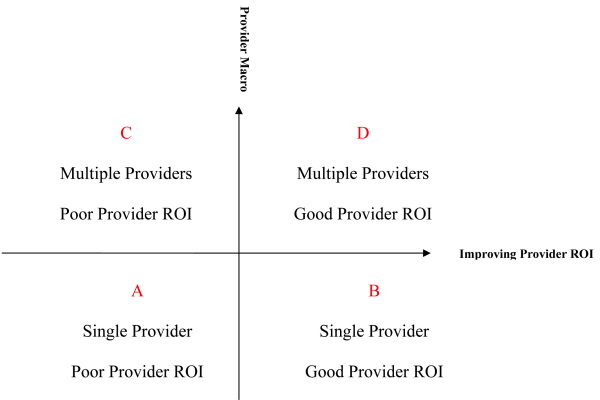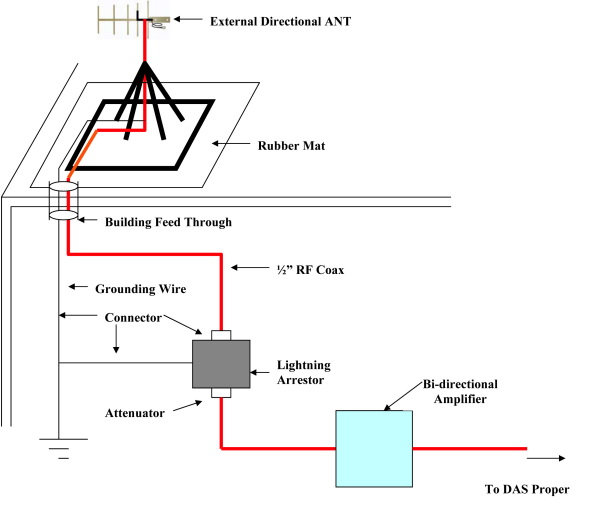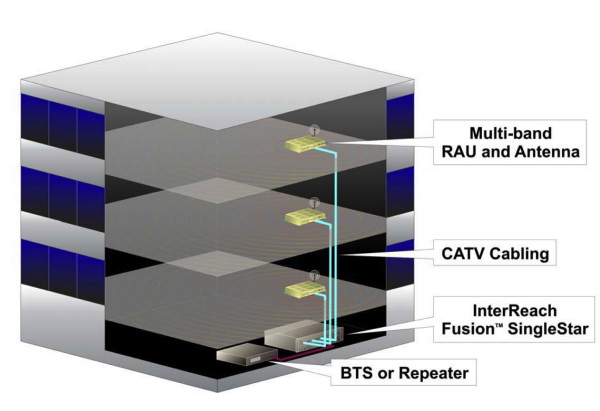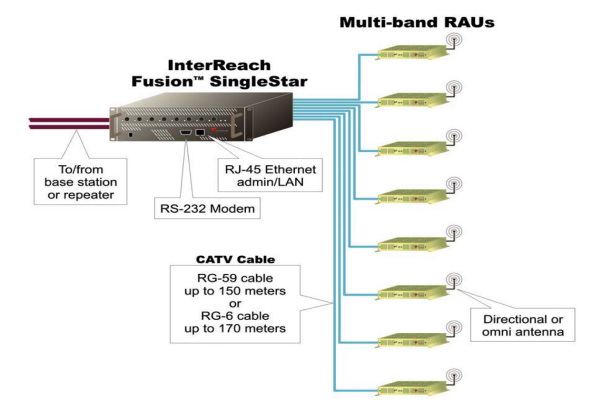
March 29, 2009
Submitted by ADC Canada
Healthy competition is the foundation of a progressive, innovative and dynamic industry. The Canadian wireless services sector stands out as a fine example of what low levels of competition can do to an industry. A real competitive environment in the Canadian wireless industry has often been promised but rarely achieved—something like the fake palm trees seen in some Toronto neighbourhoods in the middle of a winter storm.
The
latest wireless spectrum auction in the AWS bands by Industry Canada
may be easily dismissed with a roll of the eyes and the cry of “More of
the same!”. However, things are fundamentally different this time
around. A new approach in the latest auction may have done the trick.
40 MHz (out of 105 MHz) were specifically set aside for new entrants.
This has attracted the much-needed competitive attention both from
incumbents and, more importantly, from potential new
competitors—including those based overseas. Bid prices have run two to
six times higher than the U.S. auction garnered.
It may
be argued that Canada simply doesn’t have room for more service
providers, but the reality is different. There has been a lack of
healthy competition in the Canadian wireless services business scene
over the recent past. This manifests itself mainly in the form of poor
market penetration rates in Canada, which are among the lowest in the
G8 nations (compare 58% versus 77% in the U.S. [The Economist’s Pocket
World in Figures, 2007 Ed.]).
This
represents an untapped market potential that is now poised to blossom
with the stimulus of lower prices and better services from the upcoming
changes in the competitive health of the industry. Hi-tech mobile
services have almost become a necessary tool of business in the
corporate environment of developed nations. Canada cannot afford to lag
behind its G8 peers any longer, and the latest infusion of fresh
competition from the AWS auction is overdue and welcome. More
importantly, the Canadian enterprise needs to stop operating in a
sub-prime wireless environment and compromise its competitive edge on
the global economic stage.
The in-building coverage problem
While it
is great to know that things are getting better from a competitive
perspective, there is another important and often forgotten aspect of
this picture that needs even more attention in Canada now. This issue
threatens to keep a significant number of end user businesses from
reaping the benefits of increased competition and newer services in the
wireless services sector. Enterprises that occupy office building
spaces continue to face the so called “in-building coverage problem”.
This
problem is not really new and relates to the degradation of providers’
radio signals inside building spaces, limiting the availability of
wireless service. This problem has seen further aggravation due to
increased use of high-speed wireless data products, like the
Blackberry, but it’s going to get even worse with newer, high-tech
mobile services that are quickly evolving. However, with the right
knowledge, the in-building wireless problem can not only be solved, but
turned into an advantage.
{mospagebreak}
Who owns the problem
You might expect this problem rests on the shoulders of the service provider, and this is true—and false—at the same time.
A
service provider is the licence holder for its slice of the precious
and costly wireless spectrum in the corresponding geographies. Barring
a few small regional service providers, all the major providers in
Canada are business enterprises and are heavily driven by shareholder
value, business case and ROI models. Provincial and federal subsidies
do help in better distribution of service availability in less
lucrative and typically rural/remote regions, but the providers are,
for the most part, just following the money in a free-market
environment.
When it
comes to investing in in-building extensions to their macro networks,
the providers’ funding model naturally dictates a selective approach
based on ARPU (average revenue per user) calculations. Therefore, while
many of the high-density and typically public spaces meet the ROI
thresholds, there are a significant and growing number of in-building
spaces occupied by enterprise entities of all sizes that remain beyond
the ROI justification criteria. As more wireless data and other
high-tech services are added, radio propagation and penetration inside
building spaces suffer more.
A
wireless macro network build-out by the provider is driven by business
judgment and guided by RF planning techniques designed to cover the
maximum and heaviest users within a geographic space and with due
regard to the dynamics of traffic patterns and demographic changes. The
nature of a large majority of in-building coverage problems is
typically not the lack of capacity in the macro network but the lack of
the facility to distribute that capacity inside in-building venues.
Even so, each provider may have a different level of macro capacity and
signal strength in any area due to differences in tower locations,
technology and relative architectural differences.
Service
providers are not oblivious to this problem, and there have been
innovations in developing smaller base stations. These ‘femto cells’
are basically IP-fed miniaturized versions of macro cell sites, and
they have their place in the overall solution set. Being small allows
them to be mounted inside buildings and, since they are IP fed,
structured cabling can be leveraged for connectivity to the radio
backhaul gear.
This,
however, doesn’t solve the problem for the typical medium- to
large-enterprise space, as a femto cell typically works best for venues
up to 3000 sf, and is not really a ‘distribution’ solution, which is
really what is required for uniform coverage inside buildings. It is
more of a capacity drop and, therefore, is unable to provide uniform
coverage for medium- to large-size venues.
Installing
several femto cells to cover larger spaces only results in high cost
beyond the ROI threshold, as it leads to waste of precious spectrum to
manage overlaps, frequency planning, noise and hand-offs. Even when the
provider deploys a femto cell in an enterprise, an in-building
distribution system working off one or more femto cells remains the
best way to address in-building needs of a vast majority of enterprise
spaces.
{mospagebreak}
The IB matrix
Enterprise
spaces largely fall into one of the following categories as illustrated
by the IB (in-building) matrix shown in Figure 1. This is, admittedly,
a simplified illustration, but it clarifies the choices available to
the ‘wirelessly stranded’ enterprise-in-a-building.
 The
The
X-axis plots improving provider ROI, which means that building spaces
falling higher on this axis meet the ROI model of the provider and,
therefore, stand a good chance of funding by the provider. The Y-axis
plots the level of competition between providers in macro coverage. An
enterprise that is higher on this axis can expect to have increased
choices in service provider availability and, therefore, a favourable
situation.
Let us describe four broad areas (quadrants) of this matrix:
A: Only a single provider’s macro signal available in the area and enterprise falling short of provider’s ROI threshold.
B: Only a single provider’s macro signal available in the area and enterprise within the provider’s ROI threshold.
C: More than one providers’ macro signal available in the area and enterprise falling short of all providers’ ROI thresholds.
D: More than one providers’ macro signal available in the area and enterprise within the providers’ ROI threshold.
“Falling
short of providers’ ROI threshold” above also includes situations where
only fractional funding is offered by the provider to build a dedicated
IB coverage system. For the sake of simplicity, we have not included
some rare cases like availability of more than one provider but only
one or some providers willing to invest in an IB system for the
enterprise (this doesn’t affect the overall conclusions and
recommendations for the enterprise, anyway).
Situations
A and B reflect the lack of competitive choices for the enterprise and
are rather rare in urban and semi-urban regions where most of the
wirelessly stranded enterprise building are usually located. Usually,
however, more than one provider is present in urban/semi-urban areas.
Further, increased competition is expected to make this problem even
smaller in those regions, but businesses will continue to locate in
rural settings (like farms, forestry-based businesses, etc.) and that
is what Situations A and B aim to describe.
Quadrant
A is easy to analyze as it dictates investment in an IB system and
there are no other options—at least in the short term. The investment
is, however, better protected when the system is ‘neutral host’—meaning
it can accommodate more than one provider in the future and also
benefit from multiple bands from the same provider. Even when an
enterprise falls into the better of the two situations, namely B (good
ROI model), investment in a neutral host system avoids the lack of
negotiation options when new competitive providers become active in the
area.
Situations
C and D reflect acceptable competition between providers. Naturally,
situation D is ideal and businesses lucky to fall in this category
don’t really have the in-building problem, as providers have already
built IB add-ons to their macro network based on pre-existing and
recognized business justification.
It can
be deduced, then, that situations B and D don’t require the enterprise
occupant of a building to really invest in any system of its own. This
is definitely true for D but not so clear-cut for B. Depending on the
specifics of each situation, it may be better for a Situation B
enterprise to invest in a wide-band in-building system (neutral host)
of its own, which can support both the current provider as well future
competitors. It will, of course, require an investment to deploy IB
gear in the short term, but the enterprise will be in better control of
its future and possibly evolving wireless connectivity needs when new
wireless providers come knocking with new macro signals in the area.
Were the
enterprise to let the sole current provider deploy its narrow-band IB
system in their building space, the potential benefits of increased
competition will bypass them as the new entrant in future will not be
able to offer a competitive offering on the same system. In a majority
of cases, the service providers will shy away from investing their
money into an enterprise IB system when the enterprise insists on a
neutral host option versus a single carrier system that only supports
their service.
Another
related aspect to remember here is that a provider will often offer to
stretch its ROI model to accommodate an enterprise customer in exchange
for not insisting on a wide-band or neutral host system to keep
competitors out of the picture. The real value of this offer can best
be evaluated for each individual case but, more often than not, it
represents only short-term gain for the enterprise. It does free the
enterprise from not having to pay for the IB system upfront, but it
sacrifices the enterprise’s long-term negotiating power for better
service deals and control over its IB wireless future.
{mospagebreak}
Solutions
So,
unless you are an enterprise occupant of a building in situation D, you
most likely need to invest in some form of in-building distribution
system—now or soon—to stay connected at the speed of today’s business
world.
Remember,
the service provider is the owner of the spectrum licence, and an
enterprise is required by law to get the provider’s permission to
operate its own IB system. This permission takes the form of a mutual
agreement and this process is usually quite simple and quick,
especially when the enterprise is paying for the deployment of the
in-building gear. Needless to say, the system must be properly designed
and balanced to satisfy the provider that it will not cause
de-sensitization of the providers’ macro network.
Narrow-band versus neutral host
So what
choices are available to the typical Canadian enterprise with wireless
problems in its building? The broad choices are between a narrow-band
system that typically supports a single provider or a wide-band system
that supports multiple providers in the area. The latter is known as
‘neutral host’ systems. As the name suggests, these systems are key to
fully extending the benefits of a competitive wireless services
environment all the way to where it is really required—inside the
enterprise building space. However, there may be some applications
where a narrow-band system is all that is required and better suited
from a technical standpoint.
As may
be expected, the neutral host solution costs the enterprise more than a
narrow-band system. However, with the right technology (see Choices
below), this gap is much smaller; it’s very easy to deploy a neutral
host solution now and reap both the short- and long-term benefits of a
competitive wireless services environment.
Blueprint for success
In-building
systems have evolved from the earlier generation of cumbersome, passive
1/2-in. coax DAS (distributed antenna system) to more modern, active
DAS solutions that are much more in tune with the neutral host concept.
Here’s a quick, practical outline to help plan the best in-building DAS:
•
Clearly understand the nature of your wireless coverage problem by
discovering your current and potential future coordinates in the IB
matrix.
• If your matrix coordinates fall in any quadrant except D, you have some planning and work to do.
• If you
are in quadrant B, you may rely on the provider to fix the problem, but
if you anticipate the appearance of a new provider soon, investing in
your own neutral host system might be a better, longer-term option.
• If you
are in either A or C quadrant, you clearly need to invest in a good
neutral host system. If you are an A quadrant dweller, you may get away
with a narrow-band system. But with only a marginally higher
investment, you can take better charge of your future wireless destiny
by investing in a neutral host system.
• Choose the right technology/services partner and identify the provider or providers for the donor signal.
•
Negotiate and sign the necessary agreements with the provider/s with
the help and guidance of a carefully selected technology/service
partner.
• Execute the plan and deploy the system (see Choices below).
{mospagebreak}
The building blocks
Let’s
elaborate on technology and choices for the in-building system,
starting with a look at the components and the dynamics of cost
distribution thereof.
RF front end
 This is
This is
the portion of the system that is common to almost all types of system
options and consists of the external/outdoor antenna and other passive
and active radio electronics that capture the radio signals and prepare
them for the next portion and stage of the network, the DAS. This
represents a cost component that only changes a little in response to
the size of the DAS portion. A large portion of the RF front end cost
is for the installation and labour services (Figure 2).
DAS

 This
This
segment is the DAS proper, and is where the cost has a more direct
relationship with the size of the coverage problem in terms of area and
signal strength. This is the portion of the system that needs to be
carefully chosen for performance, initial equipment cost and cost of
installation, maintenance and future expansion (Figures 3/4).
Choices
The RF
front end is more or less standard radio gear that is pretty much falls
in the commodity bucket and there is very little to gain by choosing
one brand name over the other. The DAS itself is the real heart and
soul of the system and determines the quality of the match between what
is needed and what is delivered.
The
older generation passive systems based on rigid 1/2-in. coax are still
around but out of touch with the needs of today. These systems are from
the era of voice-only networks and simpler limited spectrum
allocations. The performance varies from band to band; they don’t scale
well and are very unfriendly when you’re looking for ease and low cost
of installation. In most of the G8 nations, these passive technologies
are being replaced by active DAS. The rate of growth of active DAS
systems in the U.S. from 2006-2010 is estimated at 300% that of passive
DAS systems.
In
Canada, many enterprises have relied on their wireline contractors or
even electrical contractors, who are not in touch with the changing
times. This has contributed to deployments that are not doing the job
and are costly to replace. The problem is even prevalent among the
providers who invest their main effort into building capacity and
coverage in the macro network rather than focus on limitations of
individual IB customers.
Depending
on the area to be covered, a simple multi-band BDA (bi-directional)
design may be sufficient but for most enterprise spaces in the size
exceeding 75,000 sf, though a well-engineered active DAS is ideal.
The
ability to switch and add providers to your system is the essence of a
long-term and sound in-building strategy, and is achieved by investing
in a neutral host IB system. That system will help solve wireless
coverage problem, and empowers you to make changes in your choice of
provider. It’s easy to relocate and upgrade , and doesn’t require a
training budget.
Conclusion
The time
is ripe for today’s enterprise to take charge of its own internal
wireless destiny and reap the rewards of increased competition and
choices in the wireless services arena. Many enterprises have already
found that, far from simply being another ‘must-do’ and/or ‘no-choice’
task, the in-building neutral host DAS actually works out to be a great
advantage in the long term.
For more information, or to get specific recommendations for your in-building coverage issues, contact ADC CANADA directly at or one of its Canadian partners: CROSSOVER DISTRIBUTION, GAP WIRELESS or DYNAMIC WIRELESS.
Print this page